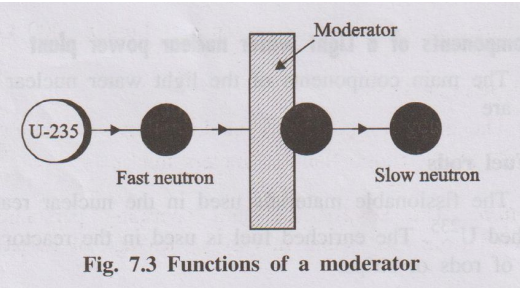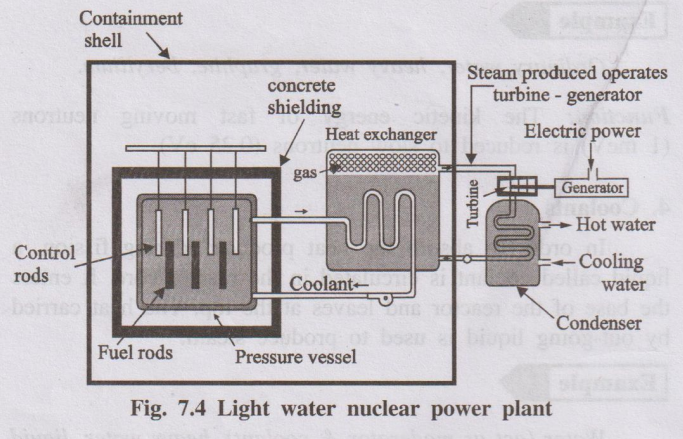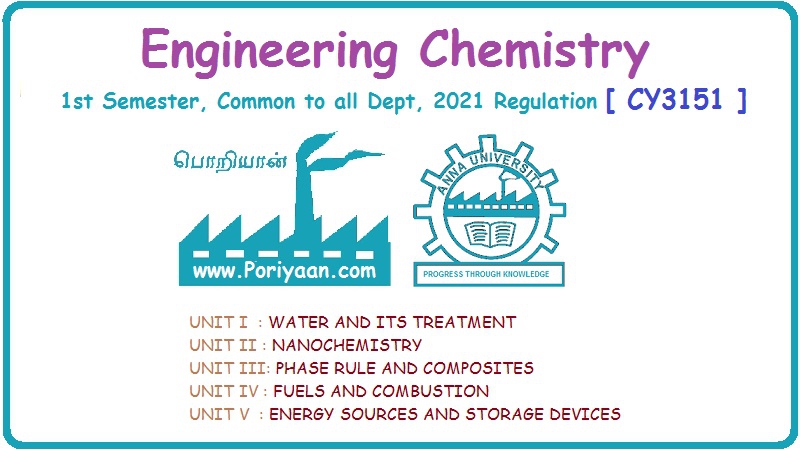Engineering Chemistry: Unit V: a. Energy Sources
Nuclear Reactor (or) Pile
Definition, Construction, Working Principle, Function
Reactors, which are designed to carry out nuclear reactions for generation of heat, electricity and radioactive isotopes are called nuclear reactors.
NUCLEAR REACTOR (OR) PILE
Reactors, which are designed to carry out nuclear reactions for
generation of heat, electricity and radioactive isotopes are called nuclear
reactors.
Definition
The arrangement or equipment used to carry out fission reaction
under controlled conditions is called a nuclear reactor.
1. Light Water Nuclear-Power Plant
Definition
Light-water nuclear-power plant is the one, in which U235
fuel rods are submerged in water. Here the water acts as coolant and moderator.
I. Components of a Light water nuclear power plant
The main components of the light water nuclear power plant are
1. Fuel rods
The fissionable materials used in the nuclear reactor is enriched
U235. The enriched fuel is used in the reactor in the form of rods
or strips.
Example : U235; Pu239
Function: It produces heat
energy and neutrons, that starts nuclear chain reaction.
2. Control rods
To control the fission reaction (rate), movable rods, made of
cadmium (or) boron, are suspended between fuel rods. These rods can be lowered
or raised and control the fission reaction by absorbing excess neutrons.
If the rods are deeply inserted inside the reactor, they will
absorb more neutrons and the reaction becomes very slow. On the other hand, if
the rods are pushed outwards, they will absorb less neutrons and the reaction
will be very fast.
Ca11343 + n10 → cd11443
+ ɤ - ray
B105 + n10 →+B115
+ ɤ - ray
Example
cd113 : 310
Function: It controls the
nuclear chain-reaction and avoids the damage of the reactors.
3. Moderators
The substances used to slow down the neutrons are called
moderators.

Fig. 7.3 Functions of a moderator
When the fast-moving neutrons collide with moderator, they lose
energy and gets slow down.
Example
Ordinary water, heavy water, graphite, beryllium.
Function: The kinetic energy of
fast moving neutrons (1 meV) is reduced to slow neutrons (0.25 eV).
4. Coolants
In order to absorb the heat produced during fission, a liquid
called coolant is circulated in the reactor core. It enters the base of the
reactor and leaves at the top. The heat carried by out-going liquid is used to
produce steam.
Example
Water (act as moderator & coolant), heavy water, liquid metal
(Na or K), air (CO2).
Function: It cools the fuel core.
5. Pressure vessel
It encloses the core and also provides the entrance and exit
passages for coolant.
Function: It withstand the
pressure as high as 200 kg/cm2.
6. Protective shield
The nuclear reactor is enclosed in a thick massive concrete shield
(more than 10 meters thick).
Function: The environment and
operating personnels are protected from destruction in case of leakage of
radiation.
7. Turbine
The steam generated in the heat exchanger is used to operate a
steam turbine, which drives a generator to produce electricity.

Fig. 7.4 Light water nuclear power plant
II. Working
The fission reaction is controlled by inserting or removing the
control rods of B10 automatically from the spaces in between the
fuel rods. The heat emitted by fission of U235 in the fuel core is
absorbed by the coolant (light water). The heated coolant (water at 300°C) then
goes to the heat exchanger containing sea water. The coolant here, transfers
heat to sea water, which is converted into steam. The steam then drives the
turbines, generating electricity.
Pollution
Though nuclear power plants are very important for production of
electricity, they will cause a serious danger to environments.
Problem on disposal of reactor waste
Disposal of reactor waste is another important problem because the
fission products viz., Ba139 & Kr92 are themselves
radioactive. They emit dangerous radiation for several hundred years. So the
waste is packed in concrete barrels, which are buried deep in the sea. Salt
water will not allow the radiation to come out.
Engineering Chemistry: Unit V: a. Energy Sources : Tag: Engineering Chemistry : Definition, Construction, Working Principle, Function - Nuclear Reactor (or) Pile
Related Topics
Related Subjects
Engineering Chemistry
CY3151 1st Semester | 2021 Regulation | 1st Semester Common to all Dept 2021 Regulation
